Garden Ideas East Facing: Bright Tips for Shady Spaces
Creating a beautiful east-facing garden can transform your outdoor space into a lush, inviting retreat. Gardens that receive morning sunlight and afternoon shade offer the perfect environment for a wide variety of plants. In this article, you will discover various ideas to make the most out of your east-facing garden.
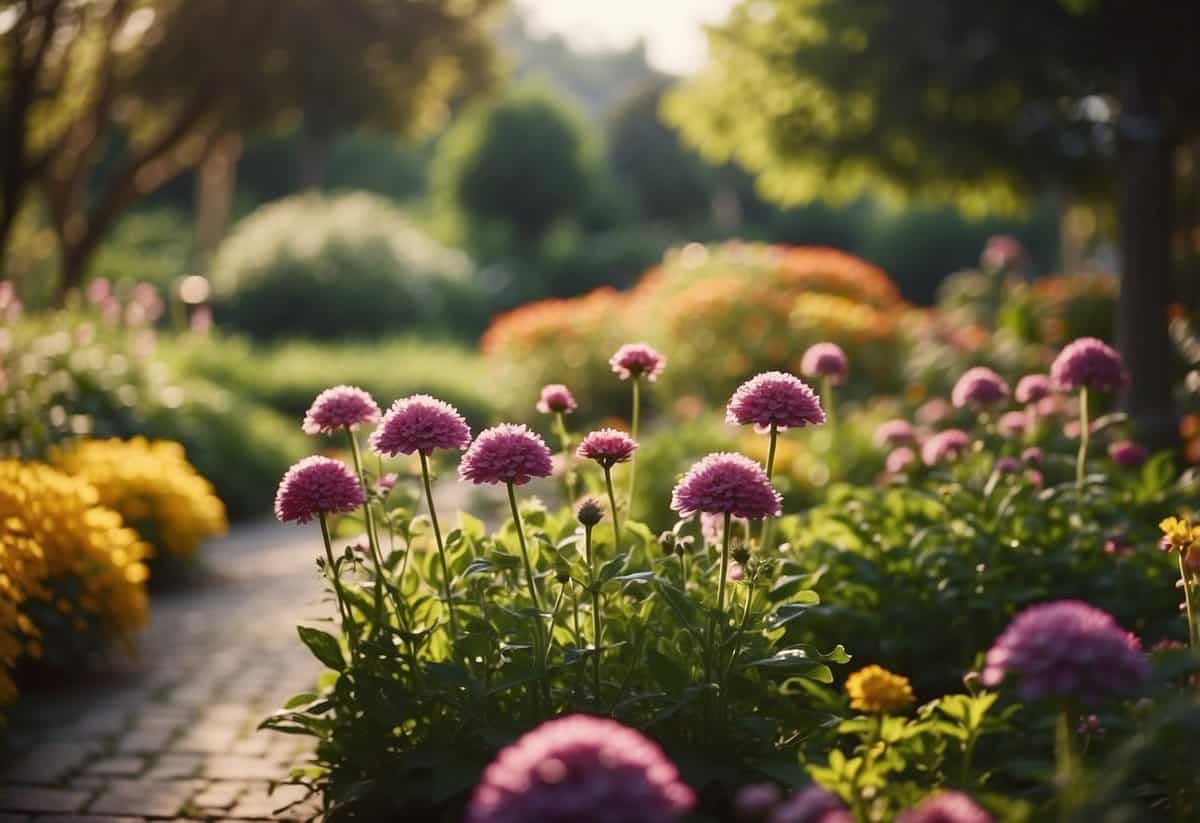
With the right selection of plants and design elements, your garden can thrive even in the partial shade. You’ll find tips on choosing plants that flourish with gentle morning sun, as well as strategies for creating an attractive and functional garden layout. Benefits include a cooler, more comfortable garden space during hot summer afternoons.
1) Morning Light Plants

Choosing the right plants for an east-facing garden can make a big difference. These gardens get gentle morning sunlight and are shaded in the afternoon.
Plants like the Himalayan blue poppy perform well here. Their blue flowers brighten up shady borders and create a focal point in your garden.
Jacob’s ladder, which prefers cooler temperatures and less direct sunlight, is also a great choice. You can explore more options like these on Plantophiles.
Variegated Sweet Iris adds color and form to these spots, thriving in the morning light. Learn more about it here.
2) Pastel-Colored Flowers
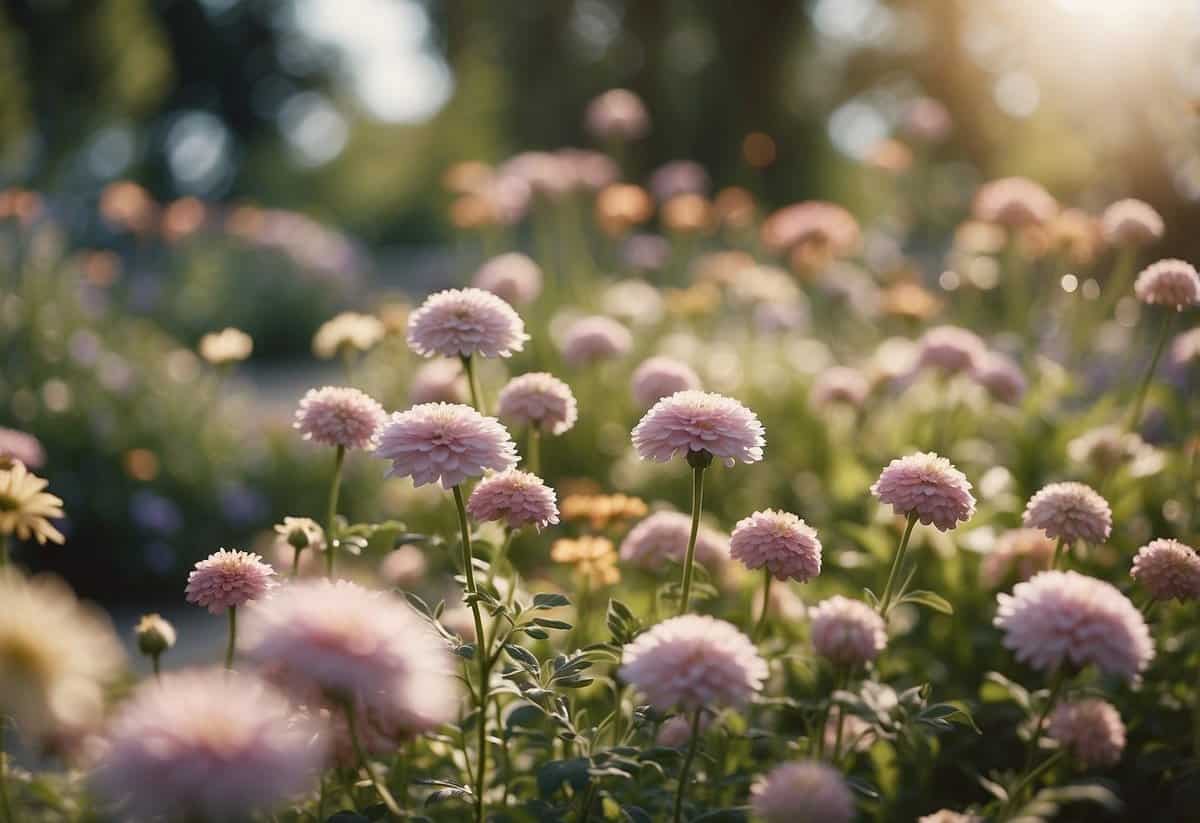
Adding pastel-colored flowers to your east-facing garden creates a calm and inviting space.
Consider planting Astilbes. These flowers come in shades of pink, white, and red, and they bloom in mid to late summer.
The Himalayan blue poppy also fits well. Its large, silky blue flowers with golden centers look stunning in morning light.
3) Potted Hydrangeas

Potted hydrangeas can brighten up any east-facing garden. They thrive in containers and add a splash of color. Make sure to choose a pot that is at least 24 inches wide.
Water your hydrangeas twice a week. Keep an eye on the leaves; if they droop, your plant needs a drink.
For healthy growth, use a mix of potting soil and compost. This ensures that the roots have enough nutrients. Remember, good drainage is key for potted hydrangeas.
4) Rustic Garden Furniture
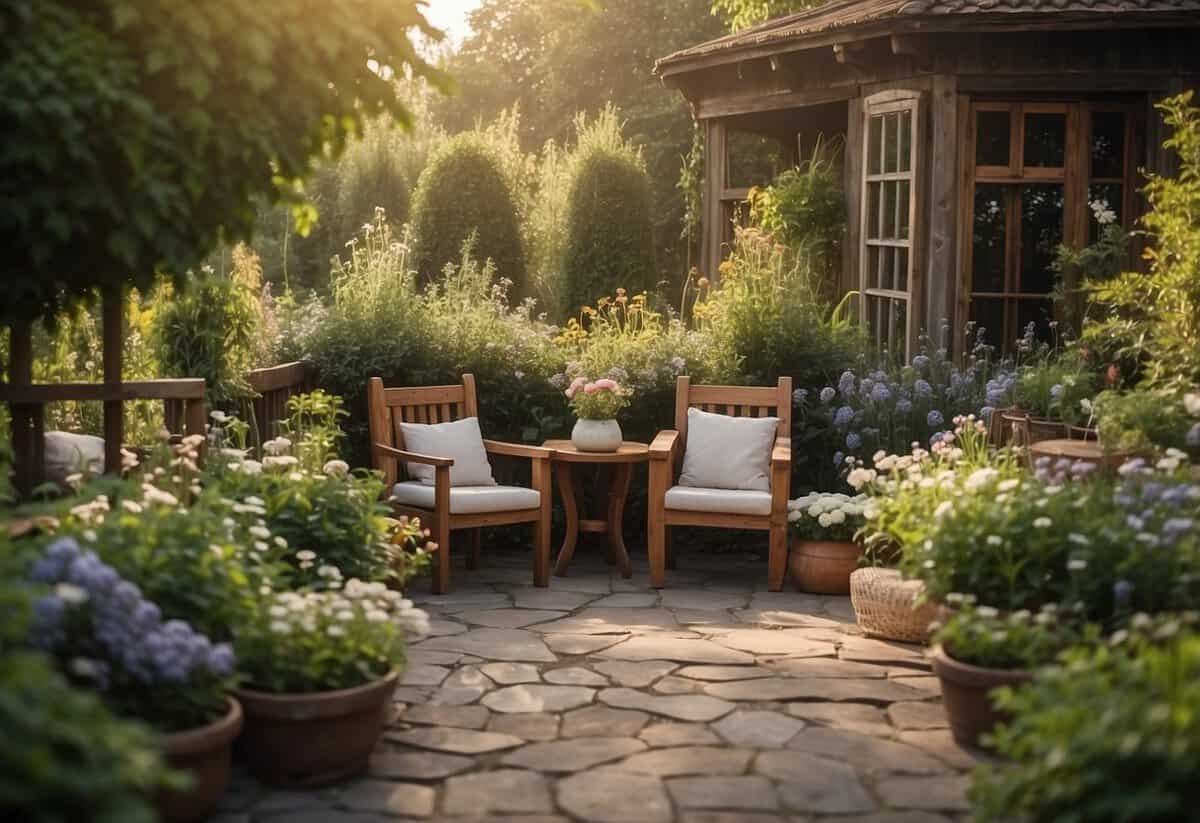
Rustic garden furniture adds charm and character to your east-facing garden. Wooden benches, tables, and chairs made from natural materials blend seamlessly with the landscape.
Consider using natural materials like reclaimed wood or wicker. These pieces age beautifully and add a cozy feel to your garden.
Adding pots filled with colorful flowers can enhance the rustic look. Long-leaved plants with spindly stems also complement your furniture and make the garden feel more alive.
Rustic garden furniture creates a welcoming space that connects you with nature.
5) Stone Pathways
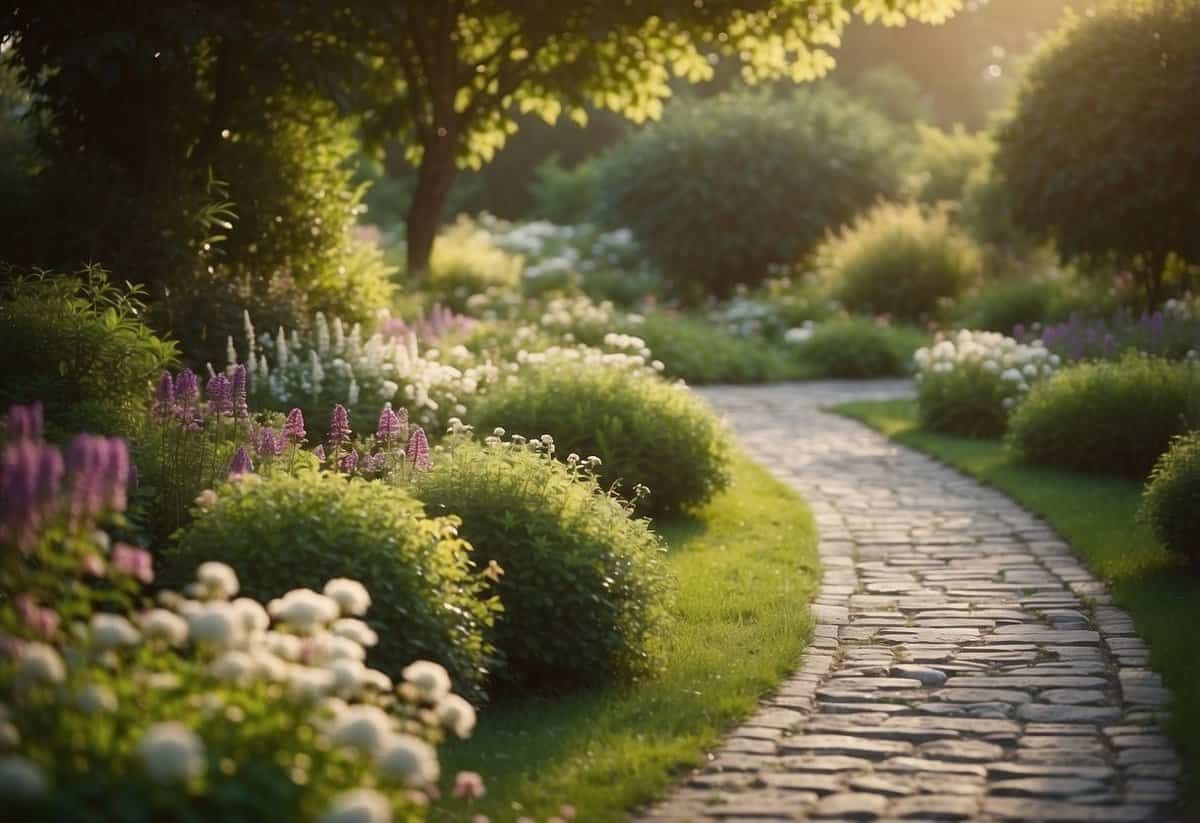
If your garden faces east, stone pathways can be a charming addition.
Paths made from flagstone or cobblestones look natural and blend well with green spaces. They can lead you through lush foliage and pretty flower beds.
For an easy DIY project, try placing stepping stones across your lawn. This creates a simple yet attractive walkway.
6) Vertical Garden with Herbs

Creating a vertical garden with herbs is a fantastic way to optimize your space. This method can fit into tight places while providing fresh, tasty additions to your meals.
You can use repurposed materials like a pallet wood three-tiered herb garden. This brings a rustic charm to your garden area.
For a mobile option, transform an Ikea bar cart into a vertical herb garden. This way, you can move it around to catch the best sun.
7) String Lights

Adding string lights to your east-facing garden can create a cozy and inviting atmosphere. You can hang them along fences, from trees, or drape them over pergolas.
Try combining string lights with candles for a warm, intimate setting. This setup is perfect for evening gatherings and can make your garden look magical.
Use potted plants as bases for the poles holding your lights. This not only helps with stability but also adds a touch of greenery and charm. For more ideas, check out these tips.
8) Butterfly Bushes

Butterfly bushes are a fantastic choice for an east-facing garden. They attract butterflies with their vibrant blooms and offer a burst of color.
The Lo & Behold® series features compact sizes, making them perfect for smaller spaces. For larger varieties, ‘Miss Molly’ offers beautiful, intense colors.
These bushes thrive in full sun to partial shade, making them well-suited for east-facing gardens. Ensure they are planted in well-drained soil to flourish.
9) Vintage Bird Bath
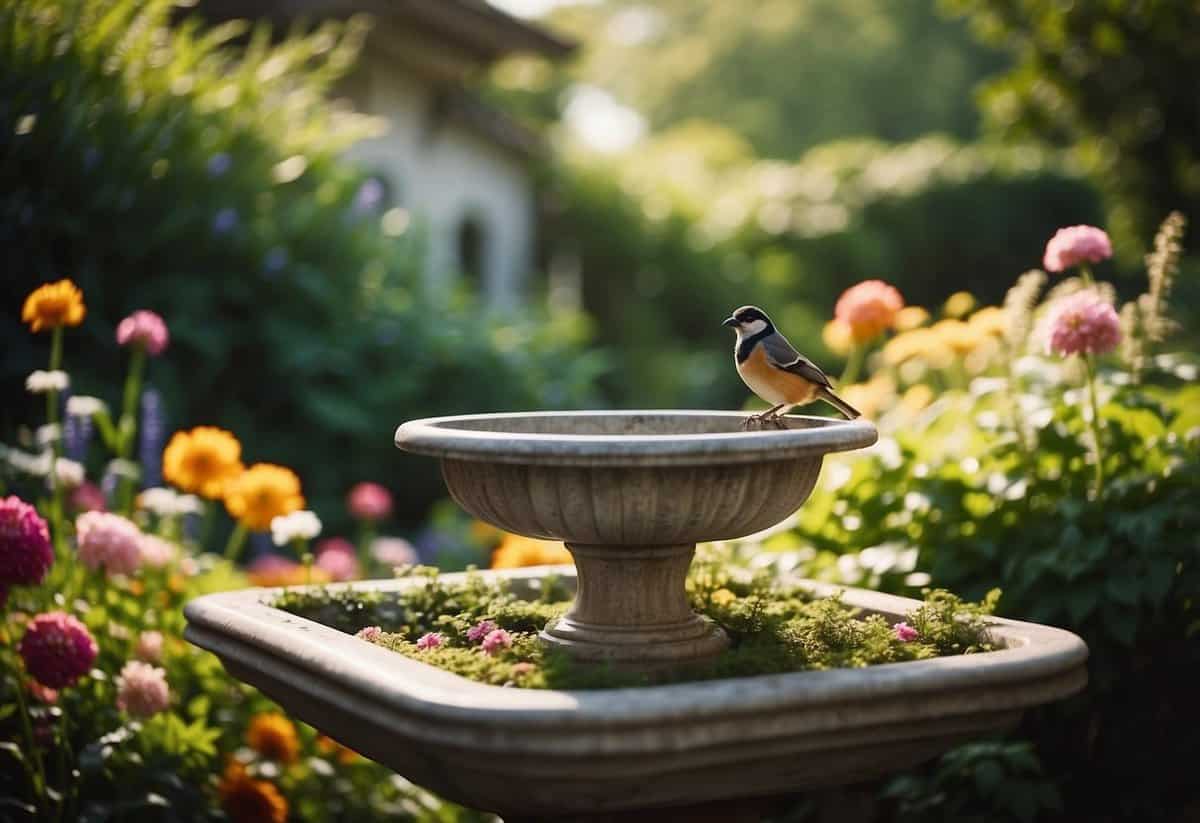
Adding a vintage bird bath to your east-facing garden can bring a touch of charm and nostalgia.
You can find beautiful options on Etsy. Think about placing it near flowering bushes or a colorful flower bed.
The bird bath will not only attract birds but add a focal point to your garden.
10) Gnome Decor
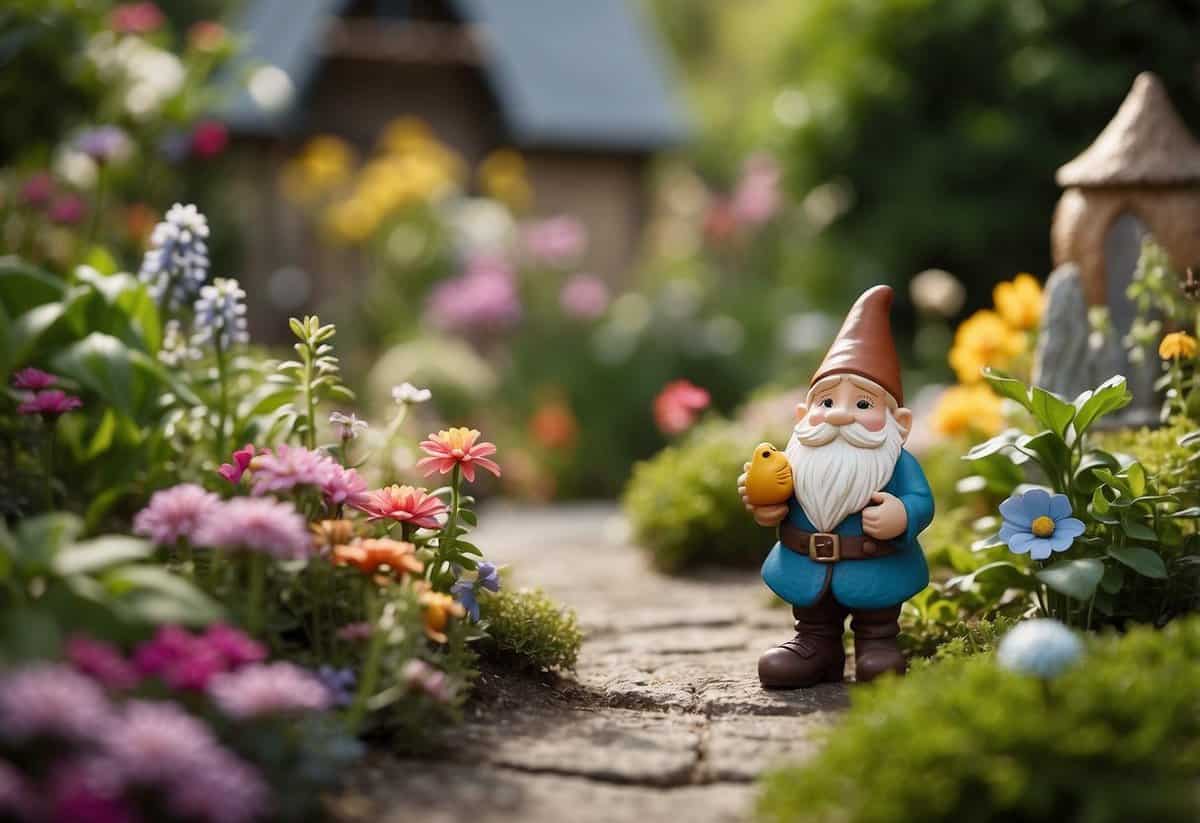
Adding gnome decor to your east-facing garden can bring a touch of whimsy and charm. You can choose gnomes in various poses and styles to match your garden’s theme.
Consider placing a moss flocked gnome near your plants. This can create an enchanting, natural look.
A gnome with a wheelbarrow can give the illusion of a helpful little gardener.
Understanding East-Facing Gardens

East-facing gardens receive morning sun and afternoon shade, which can help many plants thrive. The specific soil and sunlight patterns are key elements to consider when planning your garden.
Sunlight Patterns
East-facing gardens get the first rays of the day. This morning sun is gentle and cooler than afternoon sun, making it ideal for plants that need some light but can’t handle intense heat. For example, Astilbes and hostas flourish under these conditions.
These areas typically receive about 4 to 6 hours of sunlight each day, usually before 1 PM. By afternoon, the garden is mostly in shade. This balance allows for a mix of flowering plants and lush green foliage without the risk of scorching. Choose plants that benefit from the morning light but can still thrive in the shade, like the Himalayan blue poppy.
Soil Conditions
Soil in east-facing gardens tends to stay moist longer due to the lack of harsh, direct sunlight in the afternoon. This can benefit moisture-loving plants like astilbes, which prefer regular watering.
The soil is often cooler too, protecting roots from excessive heat. Ensure that your garden soil is well-draining yet retains enough moisture to nourish your plants. Adding compost can improve soil quality by increasing its ability to hold water while also providing essential nutrients.
It’s also helpful to regularly check the soil’s pH level to suit the needs of your selected plants. Many plants common to east-facing gardens, such as Jacob’s Ladder, prefer slightly acidic to neutral soil.
Best Plants for East-Facing Gardens

East-facing gardens get morning sunlight and afternoon shade, making them ideal for many types of plants. This setting is great for plants that like gentle sunlight but not intense heat.
Flowering Plants
Himalayan Blue Poppy: This poppy features large, silky blue flowers with golden stamens. It’s perfect for adding a pop of color and creating a focal point. The Himalayan blue poppy thrives in morning sun and prefers cool temperatures.
Jacob’s Ladder: Known scientifically as Polemonium caeruleum, Jacob’s ladder produces clusters of blue flowers. It dislikes very hot temperatures, making it ideal for east-facing gardens. This plant adds both height and color to your garden.
Astilbes: These plants produce plumes of pink, white, or red flowers during mid to late summer. Astilbes also have lacy foliage, adding texture. They prefer moist soil, so make sure to water them regularly.
Shade-Loving Plants
Variegated Sweet Iris: This species, Iris pallida ‘Variegata’, is more shade-tolerant than many other irises. It adds both color and form to your garden and can grow up to 2 feet tall and wide. It’s ideal for areas that get less intense sun.
Brilliant Red Chokeberry: Aronia arbutifolia ‘Brilliantissima’ produces bright red berries that stand out in a garden. This plant is hardy in various climates and enjoys partial shade, making it suitable for east-facing gardens.
Clematis Alpina: This variety of clematis has feathery leaves and elegant indigo flowers. Although most clematis prefer full sun, this type does well in partial shade. It’s perfect for adding vertical interest to your garden.
Design Tips for East-Facing Gardens

Designing an east-facing garden involves making the most of the morning sunlight while taking advantage of the shaded afternoons. This balance creates an ideal environment for a range of plants that thrive under these conditions.
Maximizing Sun Exposure
Your garden gets direct sunlight in the morning, which is gentler than the afternoon sun. This is great for many plants that can get stressed by too much heat. Place sun-loving plants where they can get at least a few hours of morning sun.
Morning Glory and Hostas are perfect choices. They love morning light and do well with some shade later. Ensure taller plants are not blocking light from shorter ones. A simple way to arrange this is by placing taller plants at the back and shorter ones at the front.
Using reflective materials like pale gravel or mirrors can boost the light falling on your plants. These materials bounce light around, helping your plants soak up more of that gentle morning sunlight.
Creating Focal Points
Creating focal points draws attention and adds structure to your garden. Himalayan Blue Poppies can be a stunning centerpiece with their bright blue flowers and golden stamens, especially in the shaded parts of your garden.
Use decorative items like a birdbath, a rustic bench, or a unique sculpture to break up green spaces. These elements provide visual interest and create cozy spots to relax. Pair these items with shade-loving plants like Astilbes, which offer plumes of pink, white, or red flowers and add texture.
Grouping plants with different textures and colors around your focal point enhances its effect. Mix variegated leaves and flowering perennials to create rich, eye-catching areas that thrive in the inherent sunlight and shade balance of your garden.







